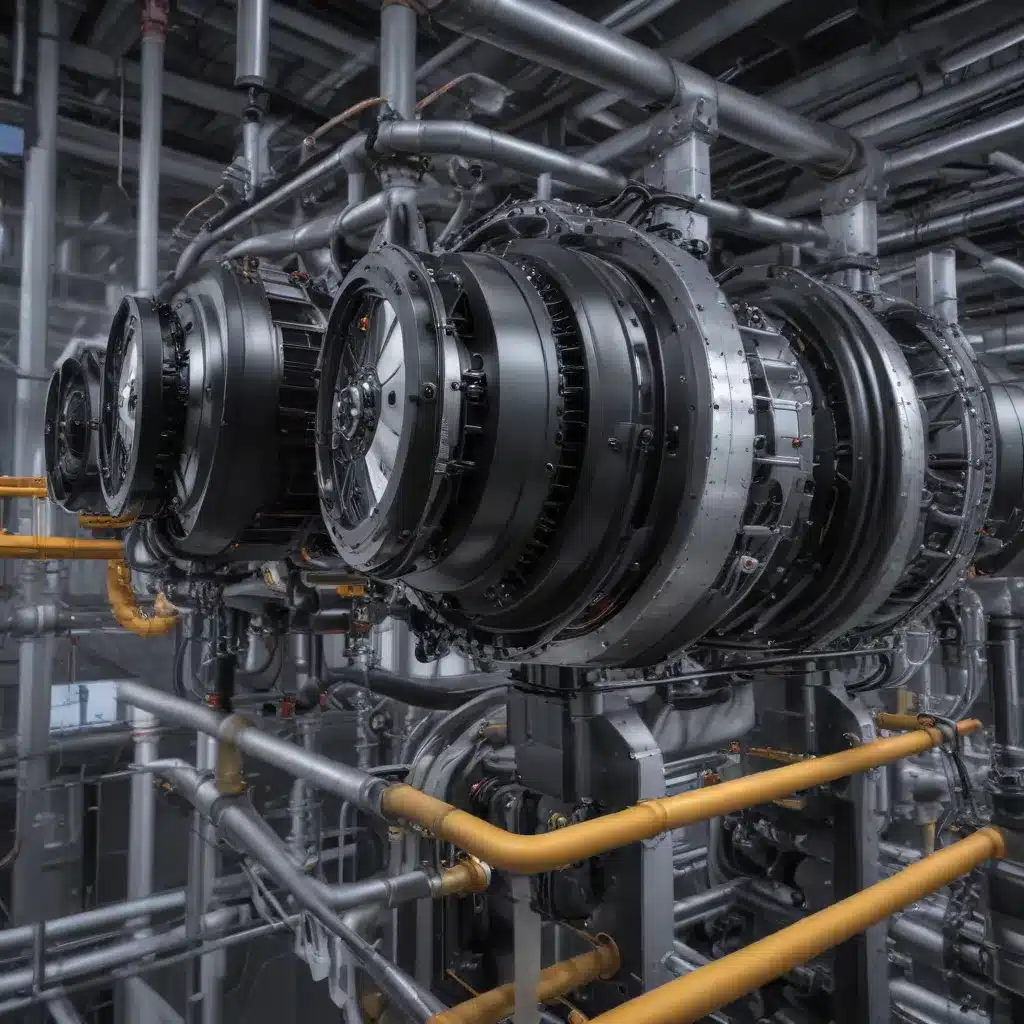
In the ever-evolving world of industrial processes, the efficient operation and reliable performance of air-cooled heat exchangers (ACHEs) are critical factors in ensuring the smooth functioning of a wide range of industries, from power generation and petrochemicals to HVAC systems and data centers. As these mission-critical assets face increasing demands for higher efficiency, reduced downtime, and enhanced predictive maintenance capabilities, the integration of emerging digital technologies has become a game-changer in the field of ACHE management.
Unlocking the Potential of Digital Twins
At the forefront of this digital transformation is the concept of digital twins – virtual models that precisely mirror the physical characteristics, operational behavior, and performance of real-world air-cooled heat exchangers. By leveraging the power of data-driven simulations, these digital replicas enable engineers and maintenance professionals to gain unprecedented insights into the inner workings of their ACHEs, allowing them to optimize design, predict failures, and implement proactive maintenance strategies.
The creation of an ACHE digital twin begins with the collection of comprehensive data, including design specifications, operating conditions, sensor readings, and historical maintenance records. This information is then used to construct a virtual model that accurately represents the physical system, capturing the complex interplay of heat transfer, fluid dynamics, and structural integrity. Through continuous data synchronization and advanced analytics, the digital twin can provide real-time insights into the ACHE’s performance, identify potential bottlenecks, and predict the onset of failures before they occur.
Enhancing Predictive Maintenance with Simulation
One of the most compelling applications of ACHE digital twins lies in the realm of predictive maintenance. By leveraging the power of simulation, maintenance teams can accurately forecast the remaining useful life of critical components, allowing them to plan and execute preventive actions before costly breakdowns happen.
The digital twin’s ability to simulate various operating scenarios and environmental conditions enables the identification of potential failure modes and their underlying causes. This knowledge can be used to develop customized maintenance protocols, optimizing the frequency and scope of inspections, as well as the timing and execution of component replacements or refurbishments.
Moreover, the integration of machine learning algorithms within the digital twin framework further enhances the accuracy of predictive maintenance. By analyzing historical data and identifying patterns, these algorithms can detect subtle changes in ACHE performance, enabling early detection of emerging issues and allowing for timely interventions.
Optimizing ACHE Design and Performance
Beyond predictive maintenance, the digital twin technology also plays a crucial role in the optimization of ACHE design and performance. By leveraging computational fluid dynamics (CFD) simulations, engineers can virtually test and refine ACHE configurations, exploring the impact of factors such as fin geometry, tube arrangement, and air flow patterns on heat transfer efficiency and pressure drop.
This optimization process can lead to significant improvements in ACHE performance, ultimately reducing energy consumption, enhancing cooling capacity, and extending the lifespan of these critical assets. The insights gained from digital twin simulations can also inform the selection of materials, coatings, and other components, ensuring that the ACHE is designed to withstand the specific operating conditions and environmental stresses it will encounter.
Unlocking the Full Potential of Digital Twins
To truly harness the power of digital twins for ACHE management, organizations must adopt a holistic, data-driven approach that seamlessly integrates these virtual models with real-world operations. This requires the implementation of robust data collection and management systems, the deployment of advanced sensors and monitoring technologies, and the integration of predictive analytics and machine learning capabilities.
By embracing this comprehensive digital transformation, air-cooled heat exchanger operators can unlock a wealth of benefits, including:
-
Improved Reliability and Uptime: Accurate failure prediction and proactive maintenance scheduling can significantly reduce unplanned downtime, ensuring continuous operation and minimizing the impact on critical industrial processes.
-
Enhanced Energy Efficiency: Optimization of ACHE design and operation, coupled with predictive maintenance, can lead to measurable improvements in energy consumption and overall system efficiency.
-
Reduced Maintenance Costs: By targeting preventive maintenance activities and avoiding costly breakdowns, organizations can realize substantial savings in maintenance budgets and extend the useful life of their ACHE assets.
-
Increased Safety and Environmental Compliance: Digital twins can help identify and mitigate potential safety risks and ensure compliance with evolving environmental regulations, such as emission control and water conservation measures.
-
Improved Decision-Making: The data-driven insights provided by digital twins empower engineers, maintenance teams, and plant managers to make more informed, data-driven decisions that align with the organization’s strategic objectives.
As the industrial landscape continues to evolve, the adoption of digital twin technology for air-cooled heat exchangers will be a critical differentiator for organizations seeking to stay ahead of the curve. By harnessing the power of simulation, optimization, and predictive maintenance, these organizations can unlock new levels of ACHE performance, reliability, and profitability, solidifying their position as industry leaders.
Conclusion
The integration of digital twin technology, simulation, and optimization holds immense potential for transforming the way air-cooled heat exchangers are designed, operated, and maintained. By creating virtual replicas of physical systems, organizations can gain unprecedented insights, enhance predictive maintenance capabilities, and optimize ACHE performance – ultimately driving improved reliability, energy efficiency, and cost savings.
As the website’s home page highlights, the future of air-cooled heat exchanger management lies in the seamless convergence of cutting-edge digital technologies and deep industry expertise. By embracing this powerful combination, organizations can unlock new levels of operational excellence, positioning themselves for long-term success in an increasingly competitive and demanding industrial landscape.

